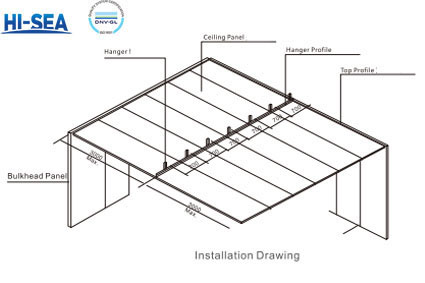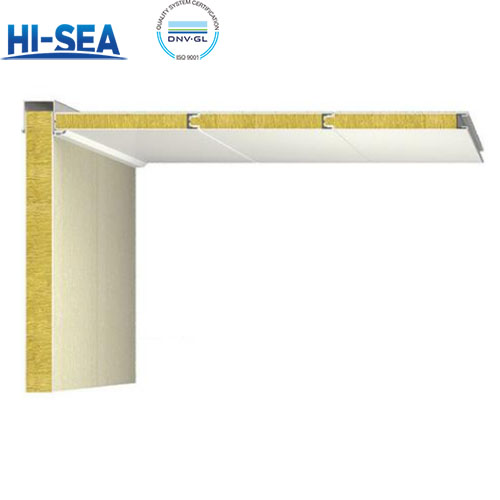
Marine Ceiling Board
Ships belong to a special environment, and once a fire occurs, it is difficult to extinguish and may lead to serious consequences such as the sinking of the ship or casualties. According to the requirements of the International Maritime Organization (IMO), all materials and components of a ship need to meet the appropriate fire rating, for example, the decks and bulkheads of a ship need to meet the Class A fire rating, and the engine room needs to meet the Class B fire rating, and so on.
Overview
Installation:
The installation of the ceiling includes two ways: boom installation and direct sticking.
1. Boom installation
Boom installation is divided into pre-buried and perforated method.
Pre-embedded method: In the ceiling fixed position, first use the drill to locate, and then pre-embedded boom fixed on the wall, and finally assembled ceiling and boom.
Perforation method:Use anchor bolts to drill holes and anchor bolts to fix the boom and ceiling.
2. Direct Paste
The direct adhesion requires the use of suitable glue and substrate, and the use of professional equipment for adhesion.
Picture:

Type | T25AXY(Ⅱ) | T30AXY(Ⅱ) |
Fire Class | ||
Weight | 13.2kg/㎡ | 14.5kg/㎡ |
Product Sound Reduction | 56dB | 56dB-58dB |
Thermal Transmittance | 1.13Kcal/㎡h℃ | 1.10Kcal/㎡h℃ |
Core Material | Rock Wool 120kg/m³ | Rock Wool 120kg/m³ |
Surface Finish | PVC film or Galvanized steel | |
Dimension | 25/30mm(t)*550mm(w)*length(max.3500mm) | |
Tolerances | Thickness°-1*Width°-1*Length±3 | |





